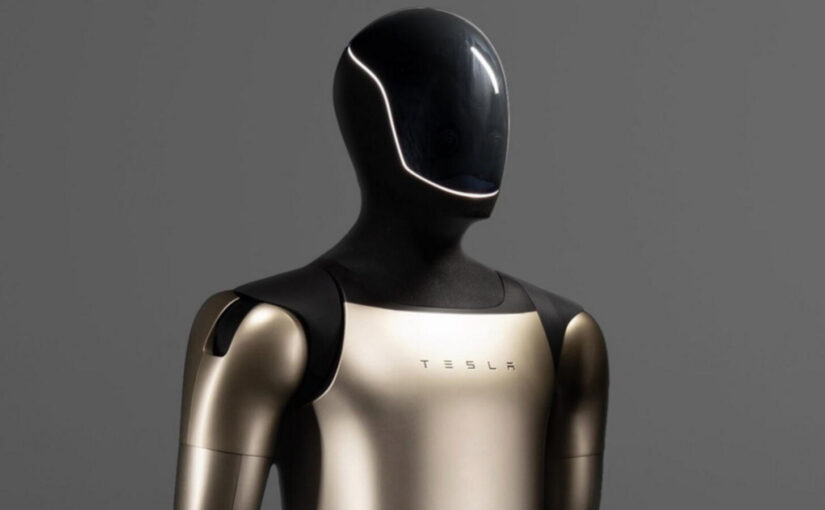Tesla’s redefinition of “Full Self-Driving” marks one of the most consequential pivots in automotive tech this decade. The company’s retreat from its bold promise of cars that drive themselves with no human oversight is sending shockwaves through the industry. This article explores how Tesla’s FSD pledge has evolved, why it changed, and what it means for the future of driverless mobility. We will cover Elon Musk’s visionary pronouncements and the hard realities now facing Tesla, its customers, and the rapidly maturing autonomous vehicle industry.
Continue reading Tesla’s Full Self-Driving U-turn: From Autonomous Dream to Supervised RealityTesla’s Optimus: The Road to Household Robots
For over a century, science fiction has promised us robotic companions that could cook dinner, tidy a living room, or lend a hand with chores. That dream has always felt distant, largely confined to Hollywood screens and imagination. Yet in recent years, Tesla has emerged as one of the boldest players attempting to make it real. Beyond electric cars, rockets, and self-driving ambitions, Elon Musk has pinned much of Tesla’s future on a humanoid robot named Optimus.
Optimus represents not just an engineering experiment but a vision of how artificial intelligence might walk off the production line and into our daily routines. But how close are we really to inviting one of these robots into our homes? To answer that, it helps to look at the remarkable timeline of Optimus from its first announcement to its latest advancements, and then consider when it might be ready for private households.
Continue reading Tesla’s Optimus: The Road to Household RobotsSpaceX Dominance, Launch Oligopoly Fears, and Space Market Risks: Is the Space Economy Too Fragile?
SpaceX’s star has never shone brighter than in 2025. With launch pads firing almost every other day, a fleet of reusable rockets, and the swelling tide of Starlink satellites circling Earth, the company founded by Elon Musk holds the reins of global space access. Yet, behind the headlines of record-shattering launch cadence and unrivaled cost efficiency, a new anxiety is rippling through the space industry. What happens when one company becomes the de facto gatekeeper to orbit and beyond? As governments, tech giants, and startups bet their ambitions on SpaceX’s reliability, questions of market fragility, competition, and long-term sustainability loom large.
Continue reading SpaceX Dominance, Launch Oligopoly Fears, and Space Market Risks: Is the Space Economy Too Fragile?Decentralized Storage: Power, Politics, and Profit
The Factory That Never Flickers
Imagine a sprawling automotive factory in Austria, humming along during the harsh winter’s peak demand period. The grid surges and prices spike. Yet production never stalls. The secret isn’t a magic wand; instead, it’s a web of distributed batteries nestled nearby, drawing and releasing energy in tune with industrial rhythms. These batteries, owned and orchestrated by a nimble startup, provide a buffer and a bargain, turning grid stress into industrial opportunity.
Continue reading Decentralized Storage: Power, Politics, and ProfitAI at the Crossroads: Can US Consumer Protection Laws Keep Up With the Digital Revolution?
Existing consumer protection laws in the US are facing intense scrutiny in the AI era. Recent rollbacks in federal regulation and moratorium proposals on state AI laws have ignited a debate over whether measures like the FTC Act, COPPA, and FCRA can handle unique AI-driven risks such as deepfakes, algorithmic bias, and privacy invasions. The issue is far from settled. As AI rapidly filters into mainstream commerce, employment, and services, political and public pressure is mounting to clarify whether current protections are enough or dangerously outdated.
Continue reading AI at the Crossroads: Can US Consumer Protection Laws Keep Up With the Digital Revolution?The 2025 Space Finance Squeeze: Who Survives the Great Divergence?
The space industry is entering 2025 with a sharp financial split: public money is rising while private venture funding remains well below its 2021 peak, creating a squeeze that is reshaping who holds power and who can survive the next 12 to 24 months. Private investment fell from roughly $18 billion in 2021 to about $5.9 billion in 2024, even as global government space budgets climbed to approximately $135 billion, with defense now the majority of public spend, a pivot that is redefining winners and losers across launch, Earth observation, and satellite communications. The question looming over founders and financiers alike is simple and urgent: who will thrive in the new space economy, and who will consolidate or fold under pressure ?
Continue reading The 2025 Space Finance Squeeze: Who Survives the Great Divergence?Unlocking AI’s Power: How Smaller Biotechs Can Speed Up Drug Development in 2025 and Beyond
The landscape of drug development has always been unforgiving, particularly for smaller biotechs. Limited capital, long timelines, and sobering success rates mean that many promising programs never reach patients. On average, it still takes more than a decade and billions of dollars to bring a new therapy to market, and less than 10 percent of drug candidates survive the clinical gauntlet. For resource-constrained startups, these odds are daunting.
Continue reading Unlocking AI’s Power: How Smaller Biotechs Can Speed Up Drug Development in 2025 and BeyondThe $236 Billion Patent Cliff: How 190 Drug Expirations by 2030 Are Sparking a Pharma M&A Frenzy
A second great patent cliff is approaching, and it is a big one, with roughly 190 branded medicines losing exclusivity by 2030, including about 69 blockbusters, putting an estimated 236 to 300 billion dollars in annual sales at risk across the sector by the end of the decade. In this wave, biologics sit at the center, with oncology, immunology, and cardio‑metabolic mainstays facing biosimilar and generic competition, a shift that will cut prices and compress margins even for market leaders. Five of the top ten drug makers could see more than half of revenue exposed, a pressure that is accelerating mergers, acquisitions, and R&D partnerships as companies race to rebuild pipelines and protect future growth. For investors and operators, this creates a dynamic market, where dealmaking, external innovation, and programmatic M&A become core strategies, and where omics and gene editing platforms emerge as prime targets for the next generation of precision therapies.
Continue reading The $236 Billion Patent Cliff: How 190 Drug Expirations by 2030 Are Sparking a Pharma M&A FrenzyPrivate Equity Reshapes Pharma Innovation: AI and Digital Tools Accelerate Drug Discovery and Clinical Trials
Private equity involvement is rapidly increasing in companies deploying artificial intelligence and digital tools to innovate drug discovery and clinical trial pipelines. This trend is reshaping the landscape of pharmaceutical innovation, offering new avenues for efficiency, scalability, and ultimately, better patient outcomes. Recent years have seen significant investor confidence, with global investments in top AI-focused pharma companies totaling billions of dollars and private equity firms playing a pivotal strategic role.
Continue reading Private Equity Reshapes Pharma Innovation: AI and Digital Tools Accelerate Drug Discovery and Clinical TrialsAI Automation’s Double-Edged Sword: Navigating Job Displacement and Regulatory Tensions in a Changing Workforce
AI automation continues to transform industries across the globe, fueling innovation and driving robust sector growth while simultaneously stirring widespread concerns over its impact on the workforce. Pundits warn that major worker displacement is a palpable threat, and the debate surrounding appropriate regulation is intensifying, promising legislative clashes in the coming months. In this article, perspectives from business reports, academic studies, policy analysts, and technology commentators are weighed against each other to offer a nuanced, well-sourced understanding of how AI automation is reconfiguring the world of work.
Continue reading AI Automation’s Double-Edged Sword: Navigating Job Displacement and Regulatory Tensions in a Changing Workforce


